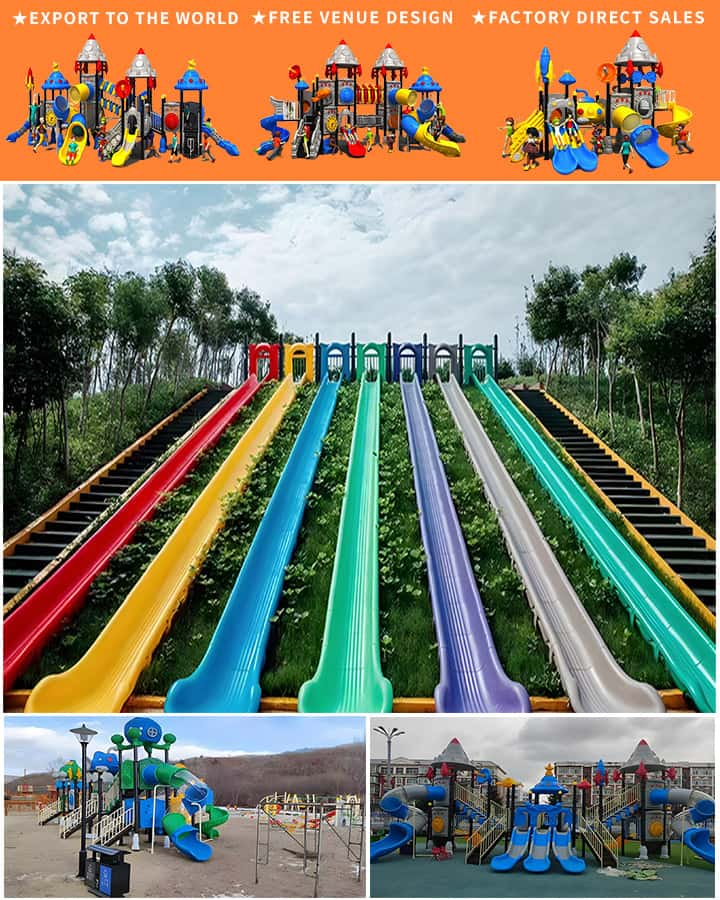When planning to build or upgrade a playground, understanding the cost associated with various pieces of equipment is crucial. From swings and slides to climbing frames and merry-go-rounds, playground equipment comes in a wide range of options, each with its own price tag. This article delves into the factors that influence playground equipment costs and offers insights to help you budget effectively for your project.
Factors Affecting Playground Equipment Cost
Several factors can influence the cost of playground equipment, including materials, size, customization options, safety features, and installation requirements.
Materials
The choice of materials is one of the primary determinants of cost. Playground equipment can be made from metal, plastic, wood, or a combination of these materials. Metal and high-quality plastic tend to be more durable but also more expensive. Wooden structures, while often more aesthetically pleasing, may require more maintenance and thus can incur higher long-term costs.
Size and Capacity
Larger playgrounds accommodating more users generally cost more than smaller setups. The capacity and dimensions of the equipment should align with the expected number of users to ensure safety and enjoyment. For instance, larger slides and multi-user swing sets will have higher costs compared to their smaller counterparts.
Customization and Features
Customized playground equipment tailored to specific themes or inclusivity standards (such as those designed for children with disabilities) can significantly affect the cost. Added features like interactive elements, shade structures, or educational components also contribute to the overall expense.
Safety Standards
Compliance with local safety standards and regulations is a non-negotiable aspect of playground equipment. Equipment that meets rigorous safety certifications may come at a premium but ensures peace of mind and reduces liability risks.

Installation and Maintenance
Installation complexity varies depending on the equipment type and site conditions. Professional installation is essential to ensure structural integrity and safety, adding to the initial cost. Additionally, ongoing maintenance, including regular inspections and part replacements, should be factored into the budget to keep the playground safe and functional over time.
Types of Playground Equipment and Their Typical Costs
Swings
Swings are a staple in playgrounds and come in various designs such as belt swings, bucket swings, and baby swings. Basic models start around \(200 per unit, while more elaborate setups with safety harnesses and multiple configurations can exceed \)1,000.
Slides
Slides range from simple straight models to intricate spiral and themed designs. A basic slide might cost around \(300, whereas larger, multi-level slides can range from \)1,500 to $4,000 or more.
Climbing Structures
Climbing structures offer varied experiences, from small climbing walls to extensive play complexes with bridges, ladders, and tunnels. Simple units can start at approximately $1,000, but comprehensive, multi-featured structures often run into the tens of thousands of dollars.
Merry-Go-Rounds
These iconic playground pieces come in different sizes and styles, including spring-driven and motorized versions. Prices typically start at \(1,500 for smaller models and go up to \)10,000 or more for larger, professionally installed merry-go-rounds.
Inclusive Play Equipment
Equipment designed to be accessible to children with disabilities includes wheelchair-accessible swings, transfer stations, and sensory play areas. These specialized items tend to be more expensive due to their unique design and manufacturing requirements, often starting around $2,000 and going higher based on complexity.
Budgeting Tips for Playground Equipment
Plan Ahead: Start with a clear plan of what you want to achieve with your playground. Assess the space, the age group of users, and any specific needs or themes.
Get Multiple Quotes: Contact several suppliers to get quotes and compare prices. Don’t forget to consider the reputation and experience of the supplier in addition to the cost.
Consider Long-Term Costs: Opt for equipment that offers durability and low maintenance to minimize long-term expenses. Sometimes paying a bit more upfront can save money over time.
Seek Funding Opportunities: Look for grants, donations, or community fundraising opportunities that can offset the cost of playground equipment. Many organizations support projects aimed at enhancing public recreational spaces.
Incorporate Volunteer Efforts: If feasible, involve volunteers in the planning, assembly, or even fundraising phases to help manage costs.
By understanding the various factors affecting playground equipment costs and planning accordingly, you can create a fun, safe, and enjoyable playground without breaking the bank. Investing wisely in quality equipment will provide lasting benefits for children and communities alike.




